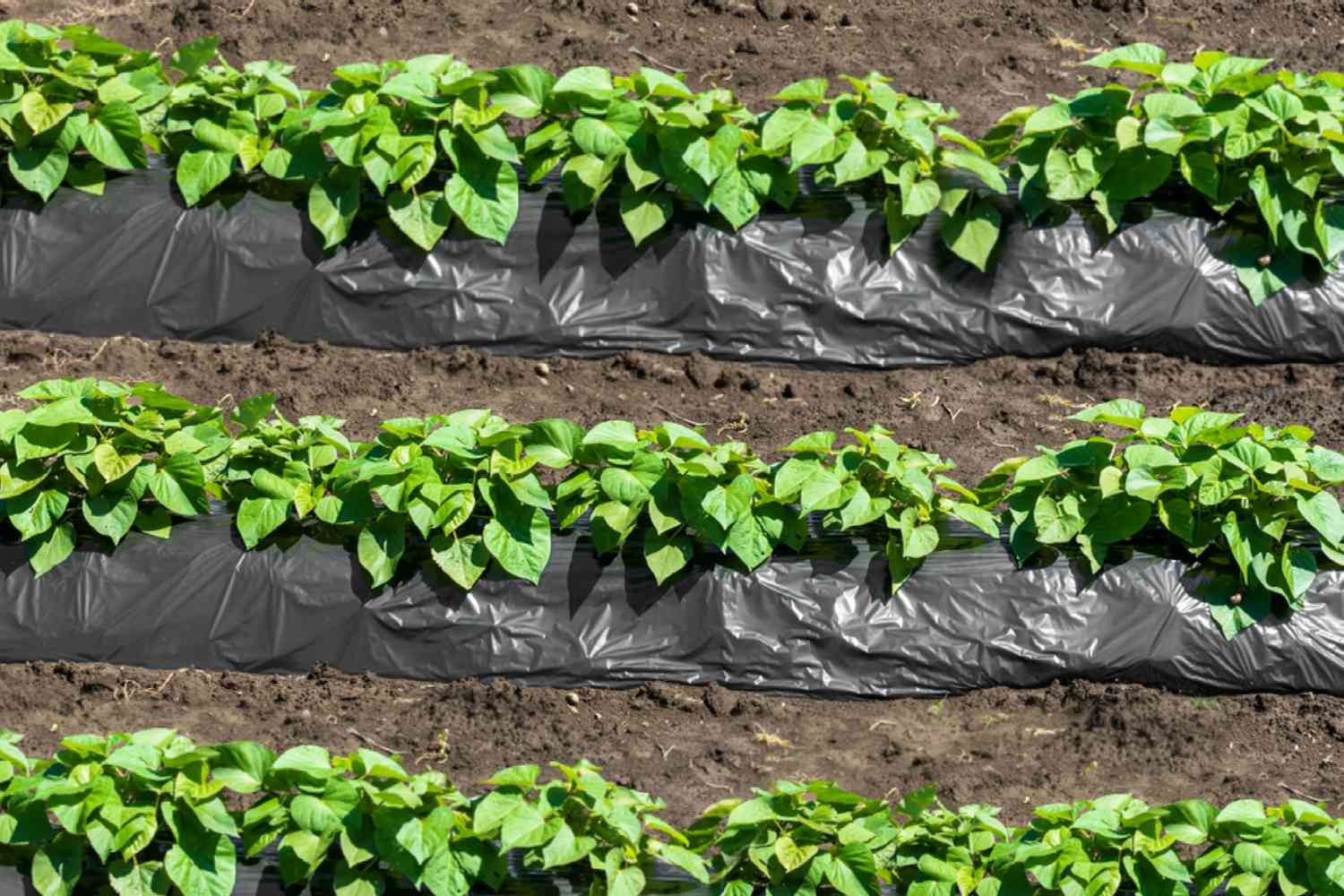Table of Contents
Sweet potatoes, contrary to their name, have nothing in common with the ubiquitous traditional potato. These belong to the morning glory family and are only distant cousins of the potatoes. Packed with nutrients and mild sweetness, sweet potatoes have found a pride of place in most gourmet menus owing to their nutrient density and also versatility.
Unlike traditional potatoes, which are grown from tubers, these climbing stems can only be grown from slips, which are stem cuttings. This splendid plant is easy to grow and easy to maintain and can be easily grown at home with the right conditions.
If you are interested in learning more about how to grow sweet potato plants, read on for an in-depth overview.
Sweet Potato Plants Key Facts: At a Glance
Common Name: Sweet Potato
Botanical Name: Ipomoea batatas
Type: Perennial
Soil: Well-drained loam
Sun: Full sun, partial shade
Planting Time: Spring
Size: 2-20ft long
Maintenance: Moderate
Days to Maturity: 90 to 150 days
How to Plant Sweet Potatoes
Sweet potato plants are hard, easy-to-grow plants. Given full sunlight and adequate water, they are easy to propagate and thrive.
1. When to Plant
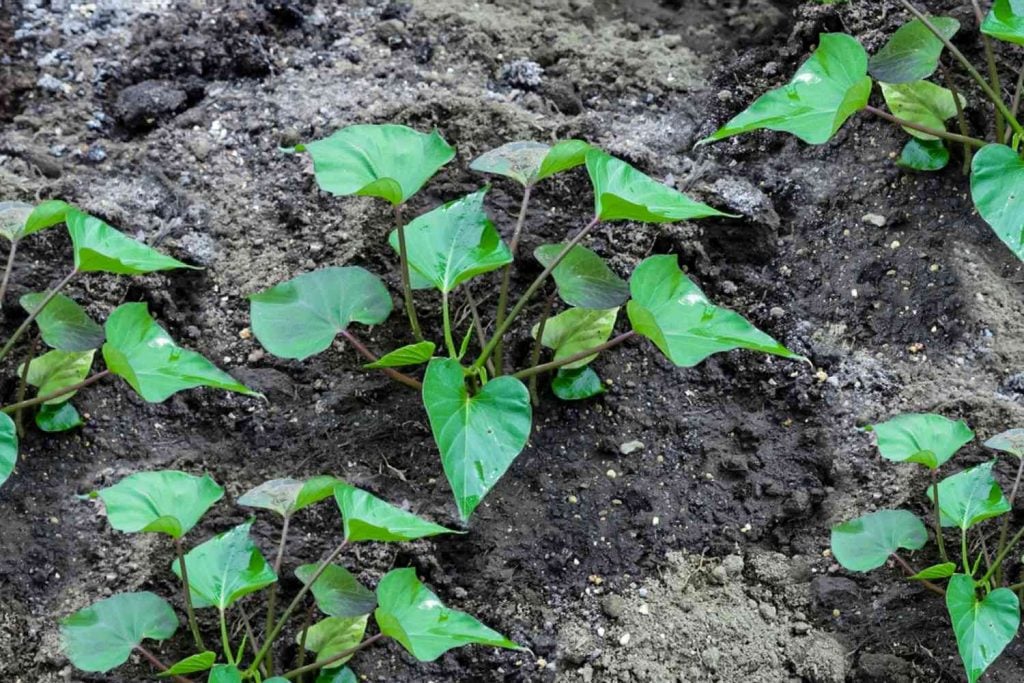
These tropical plants need plenty of warm sun, so the best time to plant them is after the last of the spring frost when the ground has warmed up adequately. Young plants need to be protected in cool nights and late frosts and need to be kept covered with the covers being taken off in the morning for the plant to thrive.
2. Planting Site
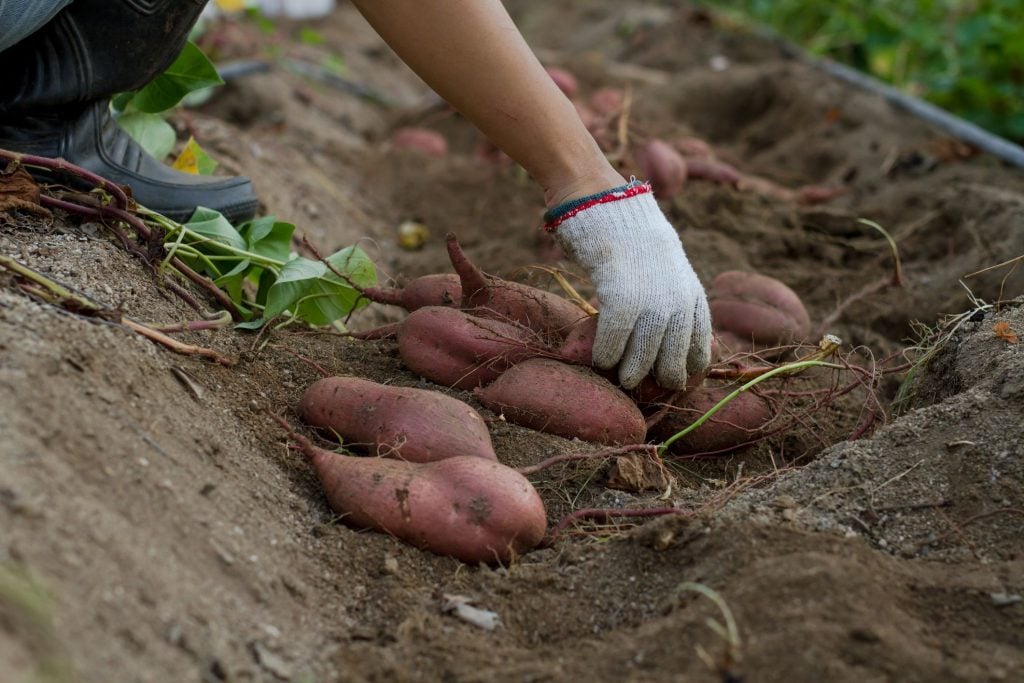
These plants thrive well in any kind of soil but tend to do better in well-drained soil with a loam texture. If the planting site is too rocky or dense, consider growing them on raised beds with rich soil with organic matter.
3. Light
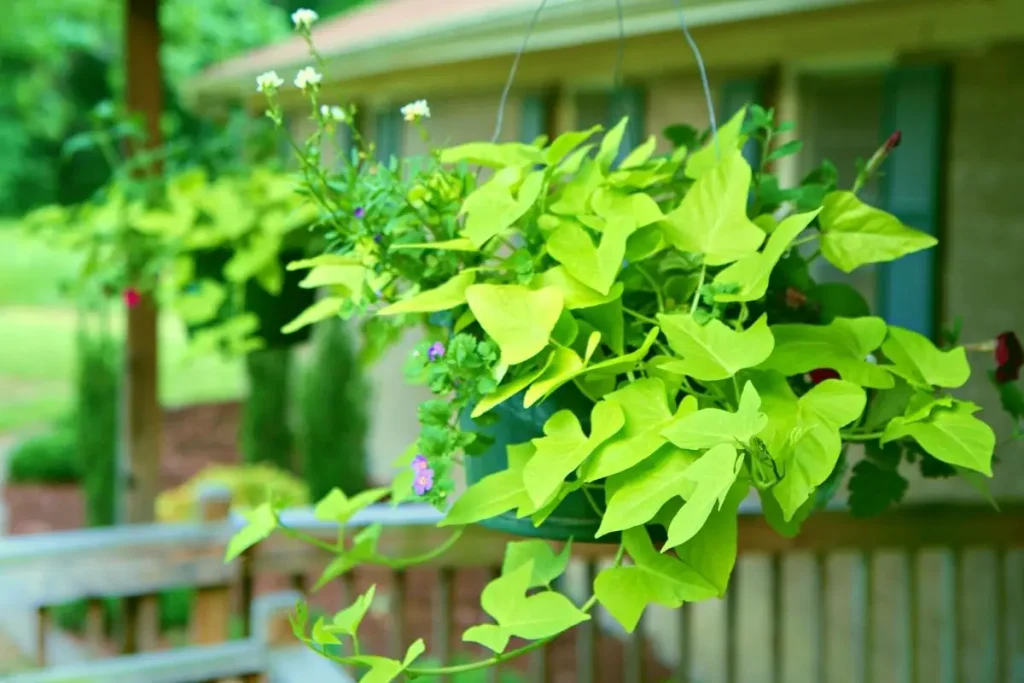
Sweet potato plants prefer full sun conditions. Though they may need some partial shade during the afternoons, especially in warmer zones.
4. Water
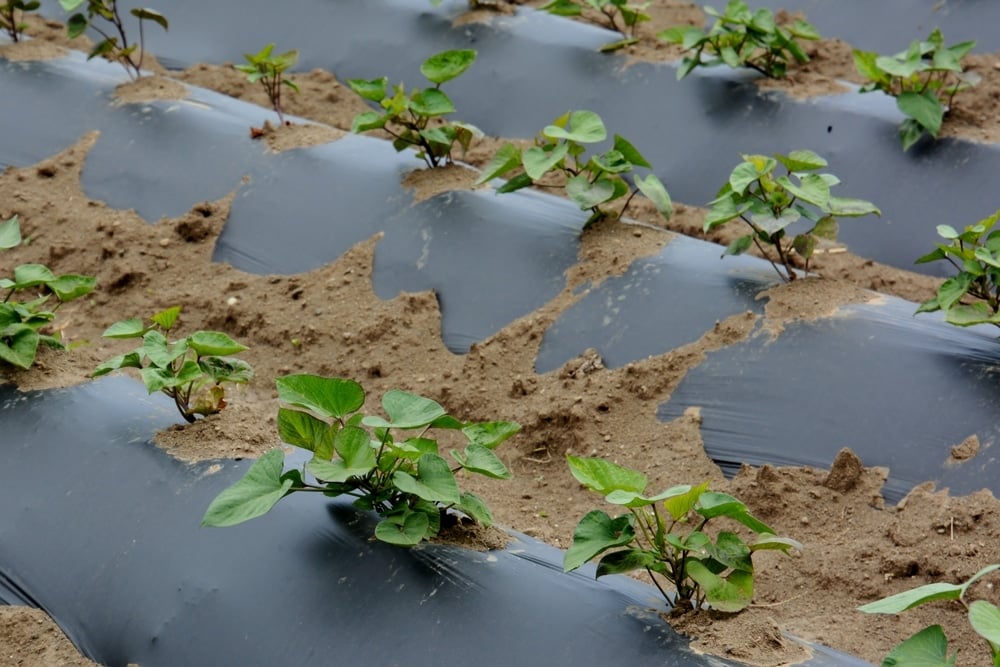
It is best to keep the soil moist rather than soggy. After it has been established, these plants need watering only once every few days, ensuring that the soil doesn’t dry out. It is best not to water them late in the harvest season to prevent the cracking of the skin of the sweet potatoes.
5. Fertiliser
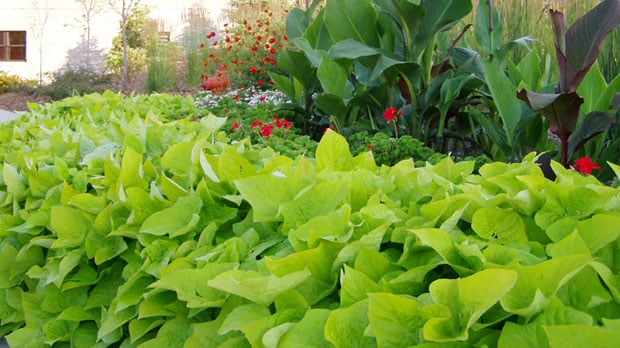
These are not heavy feeders and do not need any special fertiliser to aid in growth. A well-balanced organic-rich soil will work wonders for plant growth. It is best to add compost to the soil before planting the sweet potatoes. Overfeeding may result in dense foliage rather than the growth of all essential tubers.
Growing the Sweet Potato Plants
Step 1: The Slips
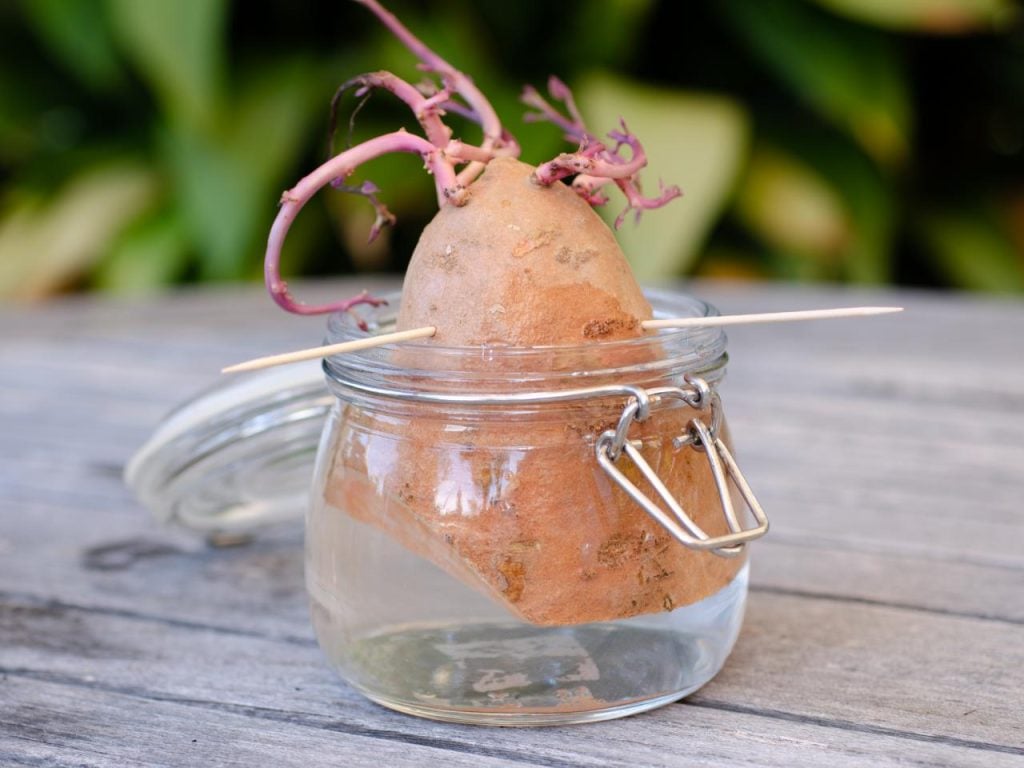
Sweet potatoes can only be grown from slips effectively. Slips are essentially root sprouts which can be easily started with healthy sweet potatoes. Cut the sweet potato in half and place them in water so that one half is submerged in the water. It can be held in place with a toothpick. Now place this in a warm place, and within a few weeks, you will notice leaf sprouts on the top and rooting below.
Carefully remove the leaf stems and place them individually in water to help them root. Within a few weeks, the roots should appear in each leaf stem. Discard the plants that do not root or rot. The stems are now ready for planting.
Step 2: Soil for planting
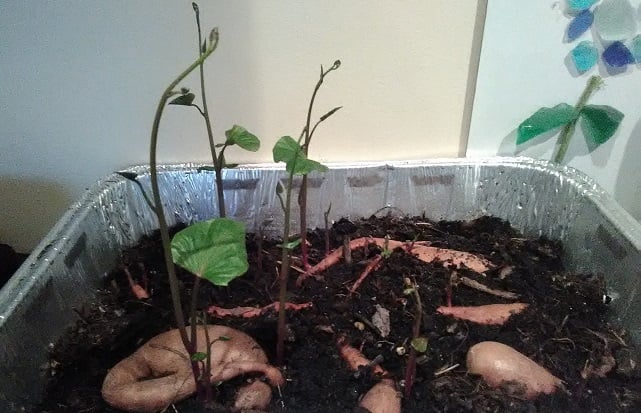
Sweet potato plants need some prep for the soil before they can be planted. These plants can grow tubers only in loose soil which is well drained. The roots and tubers should not face any resistance when they are growing. Hence loose soil is one of the most critical aspects when it comes to growing these plants.
Step 3: Planting the Slips
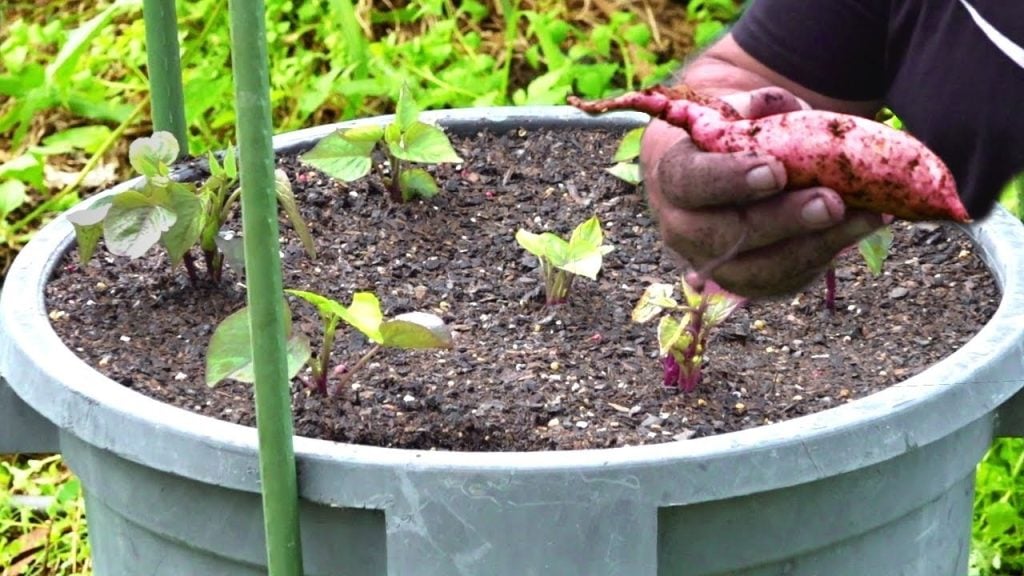
The Slips have to be planted such that the roots are pointing down. The top half of the plant with the leaves has to remain above the soil. Plant them at least 3 ft apart so that there is enough space for the vines to run. Sweet potatoes will form at the nodes. Weed the plants regularly after two weeks of planting.
Choosing the Right Variety of Sweet Potato Plants
Sweet potatoes with orange flesh are the fastest-growing varieties, but there are other varieties also to consider, which have white, purple or even yellow flesh.
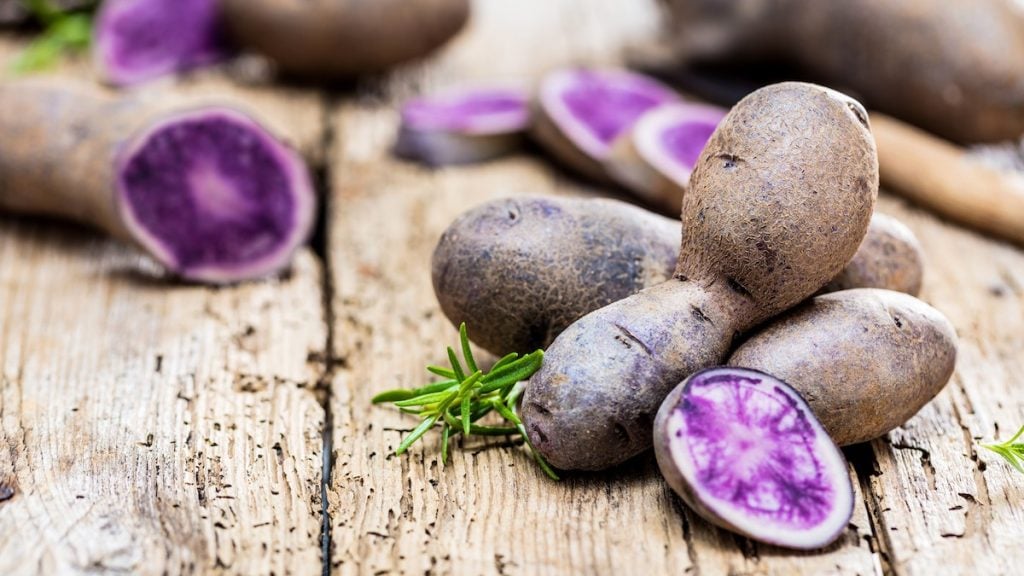
Beauregards: This variety has dark reddish skin and dark orange flesh, and it stores well.
Centennials: These have carrot orange flesh and are one of the most popular varieties of sweet potatoes.
Bush Porto Ricos: This variety is ideal for baking and can be grown in small gardens. These are a copper-coloured variety.
Georgia Jets: These have red skin and orange flesh. These are moist when cooked and are a very fast-growing variety.
Stokes: This variety has purple skin with purple flesh. They are highly nutrient dense and have more vitamin C than the orange variety of sweet potatoes.
Vardamans: These are bush-type of vines and have blue or purple foliage with reddish-orange flesh.
White Yam: One of the oldest sweet potato varieties, these have white skin and white flesh.
Harvesting Sweet Potatoes
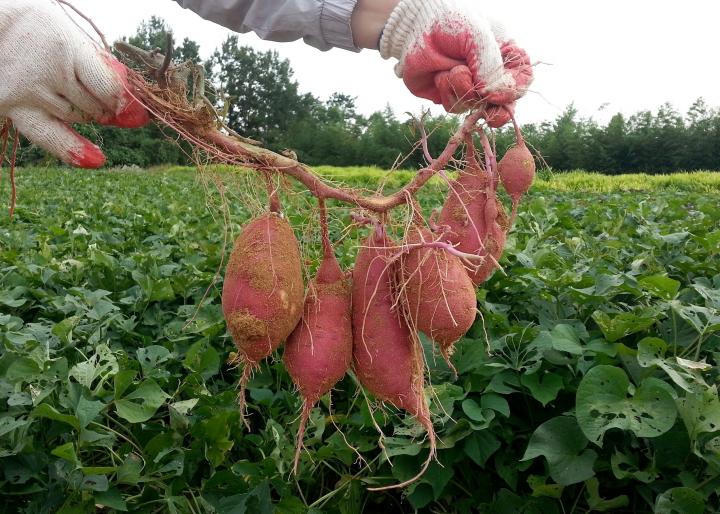
You can start harvesting the sweet potatoes once the leaves start to yellow, but the longer they are left in the ground, the more nutrient dense they become and the higher the yield. It is important to note that sweet potatoes have to be harvested before the onset of frost.
Loosen the soil around the plant to avoid injuring the plant. Using a shovel or pitchfork, gently lift the soil taking care not to damage the sweet potatoes or break their skin. Be careful not to pierce their skin because it could lead to spoilage. Gently tug and pull the tubers out, shaking off the excess mud.
Curing the Sweet Potatoes
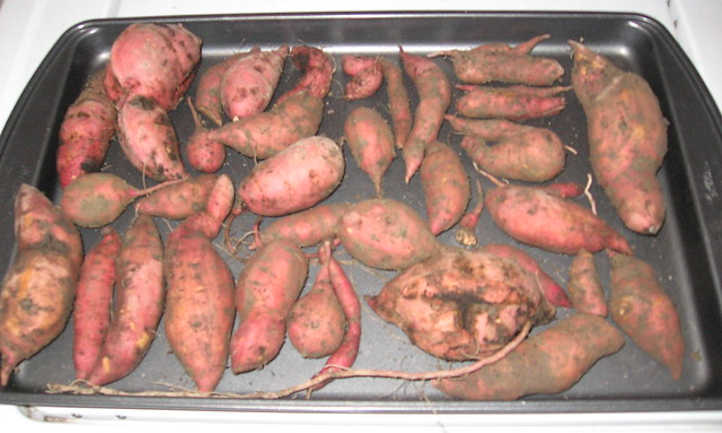
Once the sweet potatoes have been harvested, it’s time to cure them. The harvested potatoes have to be dried for storage. Leave the newly harvested potatoes to sun dry or air dry for a few hours. Then keep them in a box lined with newspaper for a few weeks to dry or cure. After a few weeks, move them to a cooler location with a humidity of 80% to store them effectively. Properly cured, sweet potatoes can be stored for a few months without any spoilage. At every step of the curing process, it is essential to check and remove any rotten potatoes immediately.
Storing the Sweet Potatoes
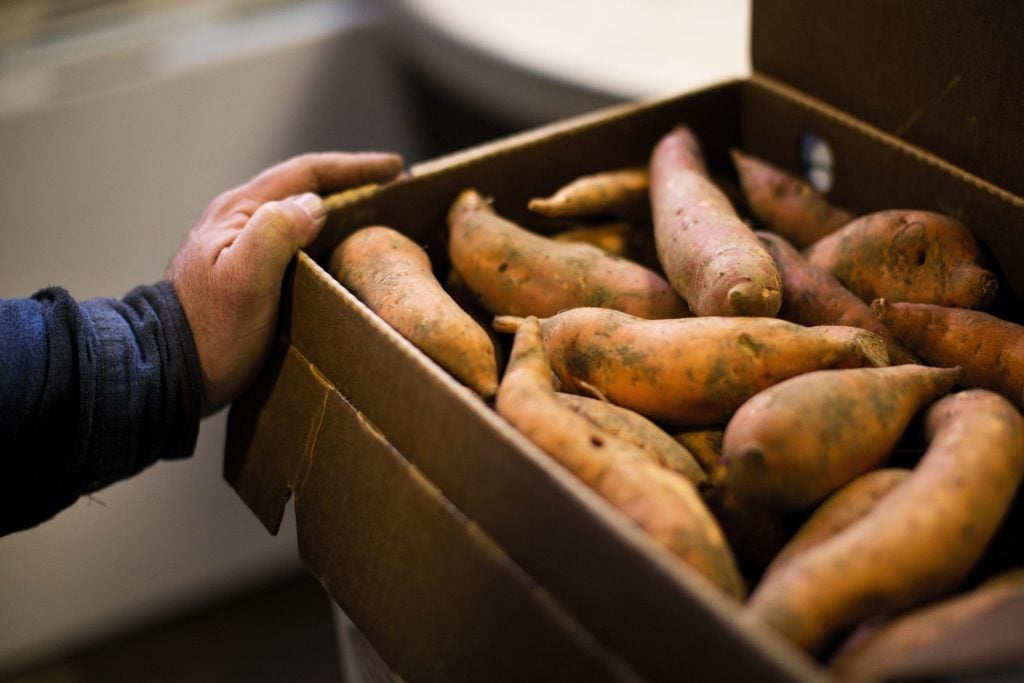
Cured sweet potatoes need to be stored in a cool, dry place at about 65℉. If stored above 70℉, their shelf life is shortened considerably, and it is best to try and store them in a cool room. If it shows any sign of sprouting or rotting, it is best to discard them immediately.
Caring for Sweet Potato Plants
Though these plants are non-fussy, they are prone to some bugs and insects. Some of the most common pests and diseases are as follows.
1. Sweet Potato Weevils
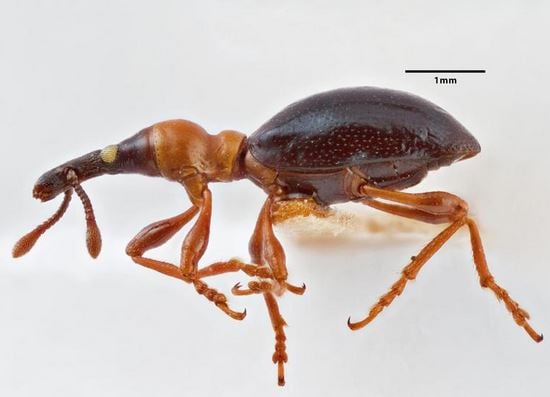
These pests are long insects with wings, the larvae of which attack the roots, while the adults attack the stem and vines. They lead to foot rot and create black-brown spots near the stem ends.
Discard any infected plant as a whole.
2. Flea Beetles
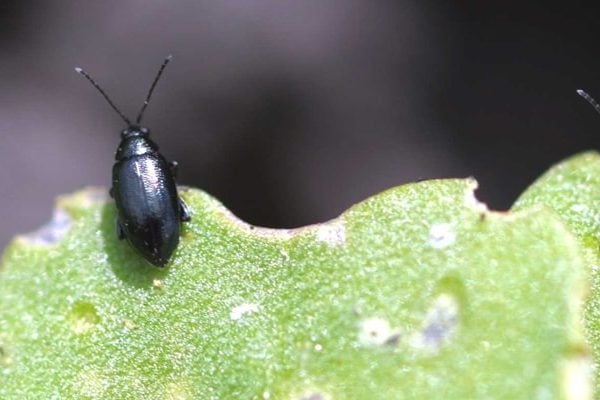
These shiny black insects attack the leaves leaving numerous holes on the leaves. You can combat these insects by using row covers, mulching heavily, adding native plants to bring in beneficial insects and also growing companion plants like marigolds to combat flea beetles.
3. Black Rot
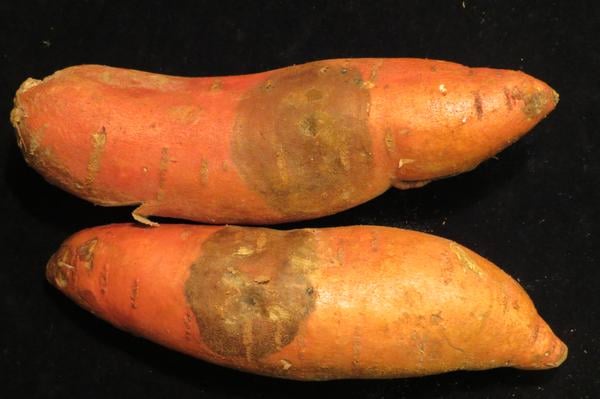
This disease results in black circular depressions on the tubers. It is best to discard the infected tubers and cure the undamaged roots from the same plant.
4. Sweet Potato Scurf
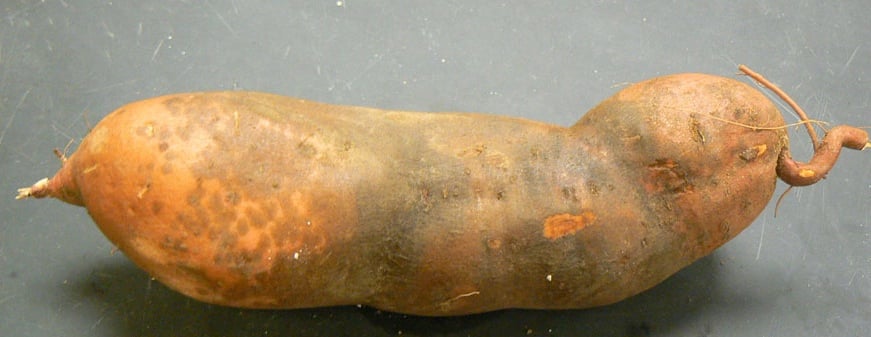
This fungus may result in Dark brown or black spots or blotches with shrivelled roots. It may affect the shelf life of the tubers.
5. Stem Rot
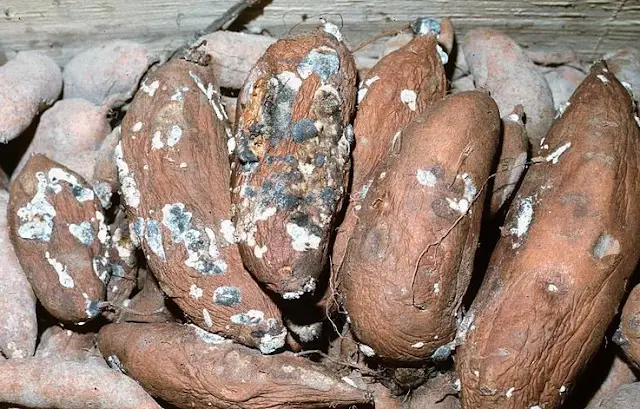
This fungus, also known as wilt, affects plants which have been injured by insects. The resulting harvest will be poor. The leaves turn yellow, and the harvest will be poor. It is best to destroy the infected plants and ensure that only resistant varieties are chosen for planting.
Growing and Caring for Sweet Potato Plants
Whatever your reason to grow sweet potato plants, be it ornamental or for their tasty tubers, these easy-to-grow plants are sure to form a pride of place in your garden. Packed with phytonutrients and minerals, these storehouses of nutrients are a wonderful addition to your daily intake. They are your average houseplant which is easy to grow and care for and add an allure to your home garden or your patio. They can even grow indoors with aplomb.
With a few tips to take care of in their planting and harvesting, you can expect a bounty of crops easily. These tubers have exploded on the global gourmet stage, highly coveted for their delectably smooth and sweet flesh and being a versatile accompaniment on any plate. Easy to grow even in colder regions with adequate cover and mulching, there is no reason not to add these plants to your garden.
Frequently Asked Questions
Are Sweet Potatoes Easy to Grow?
These plants are easy to grow and are generally heat and drought resistant. They need very less maintenance and little feeding, if any. They are also not prone to too many diseases and are generally resilient.
Can I Grow Sweet Potato Plants Indoors?
They can be easily grown indoors, provided there is adequate provision for light and sun, and the optimum temperature can be maintained at all times.
What is the Best Way to Grow Sweet Potato Plants?
Choose to plant them in late spring when the ground is sufficiently warm, and choose good quality slips. Plant them in loamy, well-drained soil and water to only keep the plant moist.
How to Care for Sweet Potato Plants?
Water the plants regularly. It grows them undercover, making sure to keep them well-ventilated. They grow vigorously, and it is best to pinch out the growing stems to encourage lateral stems to develop.
How Many Sweet Potatoes Can I Get from One Plant?
You can get up to 2 pounds of sweet potatoes from one plant. But the harvest largely depends on the accompanying conditions like soil, temperature etc.

